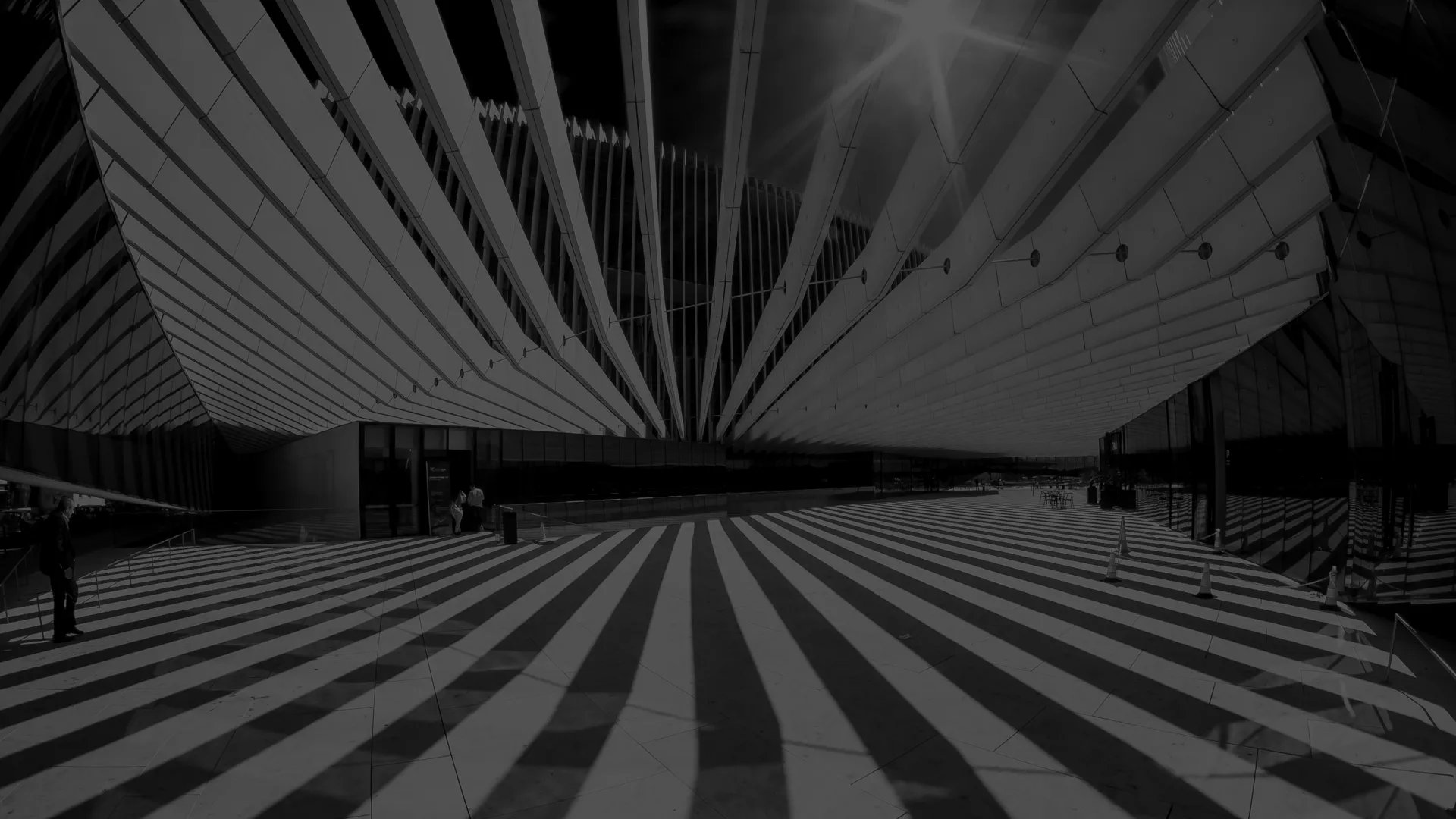
LET THE DAYLIGHT IN
Get ready to
Designing with light for comfort, energy efficiency and sustainability.
WHY CONSIDER DAYLIGHT?
Natural light, also known as daylight, enhances the quality of any building's interior.
CUT YOUR ENERGY EXPENSES
IMPROVE THE INDOOR ENVIRONMENT
INCREASE THE PROPERTY VALUE
The continuous availability of natural light helps reduce electric lighting usage and optimize building energy costs.
Comfortable and pleasant indoor spaces contribute to the well-being, health, and productivity of the occupants.
Bright and sunny real estate with great views typically commands higher values and offers a better return on investment.
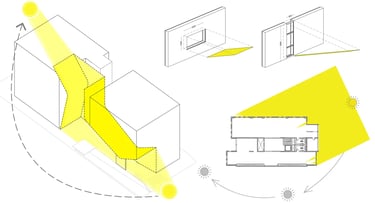

The '17037 European Standard: Daylighting of Buildings' provides criteria and levels for benchmarking, shares design guidelines and tools, as well as evaluation and validation methods.
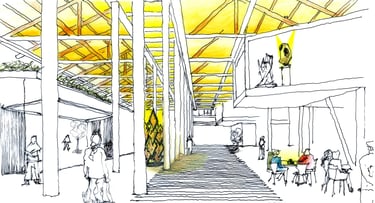

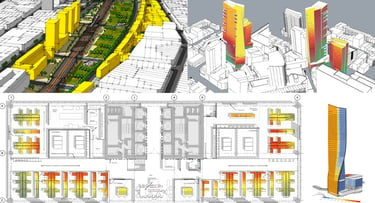

ARCHITECTS
OWNERS
DEVELOPERS
Design and build better-quality buildings, utilize more renewable energy, and comply with relevant regulations.
Enhance the quality of existing indoor spaces for living and working, and reduce energy costs.
Calculate and compare property values, and estimate the expected return on investment.
SAVE ON ENERGY COSTS - ALL DAY, EVERY DAY
USE IT ALL DAY, EVERY DAY
GET IT FREE OF CHARGE
SEE THE NATURAL COLORS
SAVE ON LIGHTNING COSTS
Daylight is available for over 4400 hours each year, all day long, every day - even during rainy and cloudy weather.
The primary source of all daylight is the Sun, providing over 8,8 × 10^7 lm/m² annual illuminance free of charge.
Daylight offers the highest color-rendering (CRI > 95%) that no electric light source can fully replicate.
A well-designed daylighting system can reduce energy consumption for electric lighting in a building by up to 75%.
DAYLIGHT PROVISION
Daylight can contribute significantly to the lighting needs of any type of building.
The daylight performance of the interiors significantly impacts the overall value of the building. Real estate professionals can use this benchmark to compare properties and deliver more accurate return-on-investment forecasts.
Daylight provision metrics help architects and their clients evaluate design alternatives during building design. The annual energy usage of electric lighting can be estimated based on the daylight performance of the future building.
For daylight design, the location and surroundings of the building, its size, position, glazing, and orientation of the openings, as well as the properties of the interior (including furnishings, wall, and ceiling surface reflectance), must be considered.
To achieve a certain level (minimum, medium, or high) of the EU standard, a target illuminance level ET (lx) must be achieved across a fraction (F plane, %) of the reference plane for at least half of the daylight hours (F time, %). In addition, a minimum target illuminance level ETM (lx) must also be achieved across the reference plane.
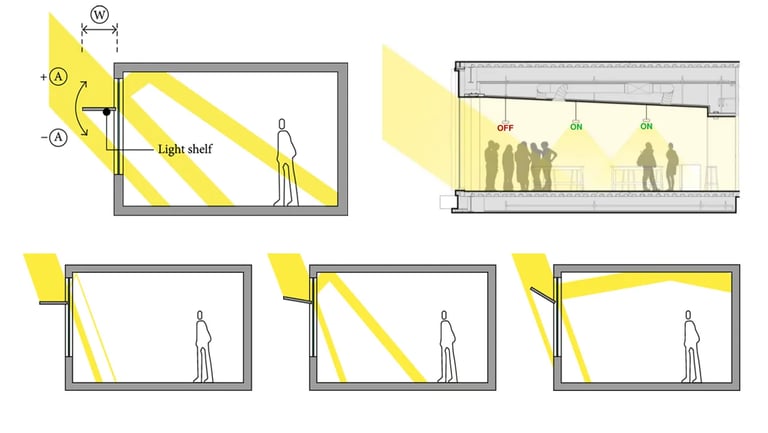

Levels of daylight provision by openings in vertical and inclined surfaces according to the EN 17037 EU standard.
LET THE SUNSHINE IN - AND STAY HEALTHY
KEEP YOUR INTERNAL CLOCK IN SYNC
GET THE SUNSHINE VITAMIN
ENJOY THE SUN AND STAY HEALTHY
LET THE SUN IN WHEN IT'S COLD
The direct sunlight is crucial for regulating the circadian rhythm and maintaining a daily sleep-wake cycle.
Vitamin D helps with bone health, blood pressure, and immune strength - but only if your body gets direct sunshine.
Sunshine helps reduce stress, combat depression, treat skin issues, improve sleep, and support a healthier, longer life.
Use passive and active solar heating systems to maximize solar gain and reduce heating costs during the cold season.
EXPOSURE TO SUNLIGHT
Direct sunlight is a key quality criterion that contributes to human well-being.
During building design, sunlight access must be considered in conjunction with solar gain evaluations, the use of passive solar systems, and visual comfort requirements as specified by architects.
Design considerations will influence the form and functional layout of the building itself, the design of the façade, the size and orientation of the daylight openings, and the characteristics of the shading systems.
Minimum exposure to sunlight should be provided in common areas of kinder gardens, retirement homes, patient rooms of hospitals, and at least one habitable room of residential dwellings or houses.
The duration of direct sunlight throughout the year in an existing building's interior can be determined using on-site measurements, photographs, and sun-path diagrams.
The level (minimum, medium, high) of exposure to sunlight is evaluated based on the minimum number of hours during which a space receives direct sunlight on a clear, cloudless day in the year, typically between February 1st and March 21st.
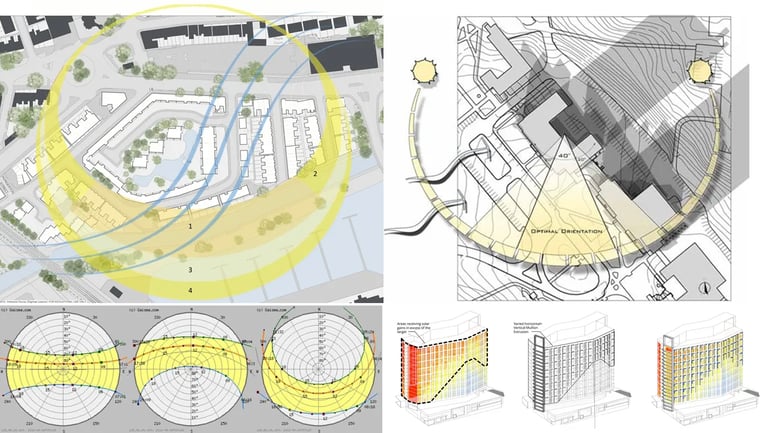

Levels for daily sunlight exposure according to the EN 17037 EU standard.
CREATE PLEASANT WORKPLACES - AT HOME OR IN THE OFFICE
STAY FOCUSED, STAY SHARP
SET UP YOUR WORKSPACE
SHED SOME LIGHT
WORK IN HARMONY
To stay focused on the work, bright sunlight or its reflection (glare) on a monitor, desk, board, or projector screen should be avoided.
Selecting the correct location and workspace position, and adjusting the viewing direction, may help reduce the unpleasant distractions caused by glare.
Proper use of shading devices can help to reduce the risk of glare in co-working spaces where occupants can't choose their work position or viewing direction.
Create a pleasant and productive work environment by harmonizing lighting, shading, interior décor, and workplace ergonomics.
PROTECTION FROM GLARE
Glare is a negative sensation causing annoyance, discomfort, or loss of visibility.
Daylight has a significant impact on visibility, visual comfort, aesthetics, task performance, safety, mood, satisfaction, work productivity, and social interactions. The presence of direct sunlight or its reflection in the field of view, however, can cause a risk of glare in workspaces.
Sunlight—particularly in classrooms and workspaces—can cause serious visual discomfort. Once the sources of glare and their duration are identified, the probability of glare can be minimized.
A glare assessment is recommended in spaces where activities are comparable to reading, writing, or using display devices, and occupants are unable to choose their position and viewing direction. For glare protection, retractable shading devices with variable translucency are recommended.
The Daylight Glare Probability (DGP) study can be used to assess protection from glare caused by daylight. This considers both the illuminance at eye level and individual glare sources of high luminance to estimate the fraction of dissatisfied persons.
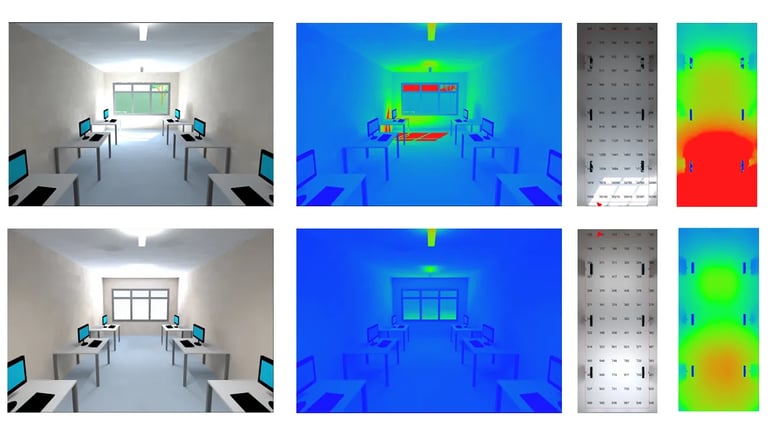

Levels of threshold for glare protection according to the EN 17037 EU standard.
ENJOY THE VIEW - STAY IN PICTURE
BE IN THE PICTURE
RELAX WITH THE VIEW
HOME WITH A VIEW
LOOK OUT, FEEL SAFE
View of the outside - visual connection with the exterior - provides information about the local environment, weather changes, and the time of day.
The outdoor view provides refreshment and relaxation by offering a change of scenery and focus, helping to ease fatigue from spending long hours indoors.
The quality (diversity, number of visible layers) and the characteristics (distance, view angle) of the view significantly influence property values.
The view of the outside world has its own unique qualities; it provides a sense of security for the occupants that can't be replaced by CCTV security systems.
VIEW OUT
Windows provide much more than daylight that can't be substituted or ignored.
The quality of the view available from the interior of a flat has a significant impact on the property's value. Flats and apartments within the same building may have equal floor areas and layouts, yet the quality of the views offered may differ significantly.
Viewing the outside provides information about the environment, weather changes, and the time of day, which can help alleviate fatigue associated with prolonged periods spent indoors. All occupants of a space should have the opportunity for relaxation afforded by a change of scene and focus.
The European standard provides benchmarks and various methods to evaluate the quality of views during the design phase of the building, as well as to verify the 'view quality' level of existing interior spaces.
The view out level is assessed from a given position and depends on the horizontal sight angle, the distance of outside view, and the number of visible layers of the exterior environment.
The quality of the view depends on the width of the viewing angle (the size of the window), the distance, the number of distinct, visible layers (sky, landscape, ground), and the quality of the environmental information of the view.
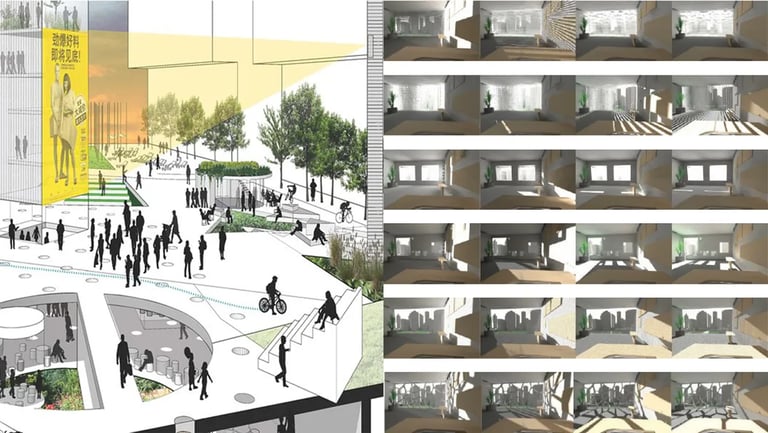

Levels of view out from a given position according to the EN 17037 EU standard.
PUBLICATIONS
Learn more about daylighting, visual comfort, and sustainable building design and guidelines.
CONTACT
Check out the 'frequently asked questions' about daylighting evaluation and reach out.
Copyright: Unless otherwise stated, all 'Content' on this page is © 2026 Filetoth. Access and Use: The 'Content' on this website is provided free of charge for personal, educational, and non-commercial online viewing and reading. For Permissions beyond the above scope, please reach out using the 'Contact' form. Privacy Policy: Please read 'Legal and Privacy Notices' page for further information on 'permissions', 'copyright', 'cookies and tracking'.